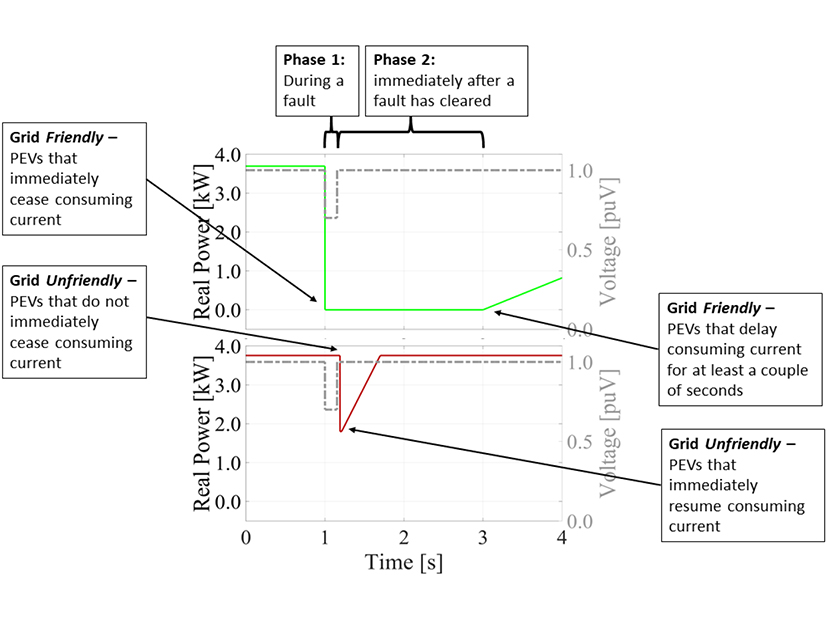
A new report from NERC, WECC, and the California Mobility Center (CMC) suggests that electric utilities and the electric vehicle industry need to start working together to address the charging behavior of EVs during grid disturbances, which could have “catastrophic consequences … if left unchecked.”
The report stemmed from a working group that NERC, WECC and the CMC formed last June to assess the impact to grid reliability of the anticipated increase in EV charging loads across the U.S. (See NERC, WECC to Examine EV Charging Risks to Grid Reliability.) Additional participants in the EV Grid Reliability Working Group included representatives from Lawrence Berkeley National Laboratory, CAISO and the Electric Power Research Institute.
“The efforts of the joint EV Grid Reliability Working Group illustrate the benefit of proactive cross-industry collaboration to achieve a common reliability objective,” WECC CEO Melanie Frye said in a media release. “Building on the work of this group, we can now improve the tools and assessments needed to understand the reliability risks and mitigation strategies for a future with much higher levels of electric vehicles and high-power charging stations in the West.”
While the working group has multiple topics of research, the new report focused on a “relatively unexplored” aspect of EVs’ intersection with the broader power grid: their performance during short-duration grid disturbances lasting from milliseconds to several seconds.
EV charging presents new challenges to grid reliability, unlike traditional end-use loads such as lighting, resistive heating and cooking. These older applications “were considered grid-friendly because their electric characteristic is constant impedance.” This means that when voltage drops slightly, the devices’ power draw also falls, supporting “stable steady-state operation of the grid.”
By contrast, EVs and other “electronically coupled loads … seek to maintain either a constant current level or a constant power level regardless of system voltage or frequency.” While the constant current approach is considered grid-friendly, because it allows power consumption to drop when system voltage declines, constant power chargers are grid-unfriendly because during times of lower voltage, their current draw increases to maintain the power level.
Another factor in grid-friendliness of EV chargers is ride-through performance and their ability to dynamically respond during mild grid disturbances. Citing data from Pacific Northwest National Laboratory, the report’s authors identified grid-friendly and unfriendly responses to disturbances.
In the grid-friendly case, the charger reduced current nearly instantaneously and kept it low for a short time; the grid-unfriendly charger did not respond to the fault until it was already cleared and then immediately resumed consuming current without giving the grid a chance to return to normal voltage levels.
The report presented its data as a starting point for a larger conversation between grid planners and manufacturers of EVs and their charging infrastructure on how best to safeguard the reliability of the grid during the ongoing electrification of transportation. Part of this work is being done by NERC and its partners in industry, which are developing a “new aggregate EV charging load model that can be used in … grid reliability studies.”
The ERO is planning further work in this area, including outreach to EV manufacturers to discuss additional areas of collaboration. The report said that building a framework for information sharing between utilities and EV manufacturers is “a key objective of NERC’s present engagement with the … working group,” which CEO Jim Robb agreed with in the release.
“As the electrification of the transportation sector continues to grow, the North American grid must be prepared,” Robb said. “Collaboration, innovation and information sharing are critical if we are to be able to meet future demands successfully. NERC is committed to working with stakeholders to unify our efforts in these areas to advance our shared reliability goals.”
